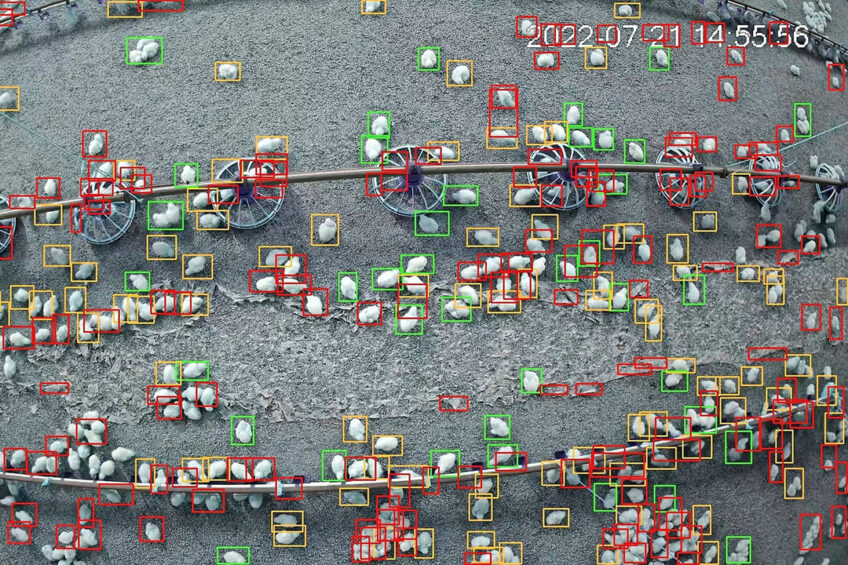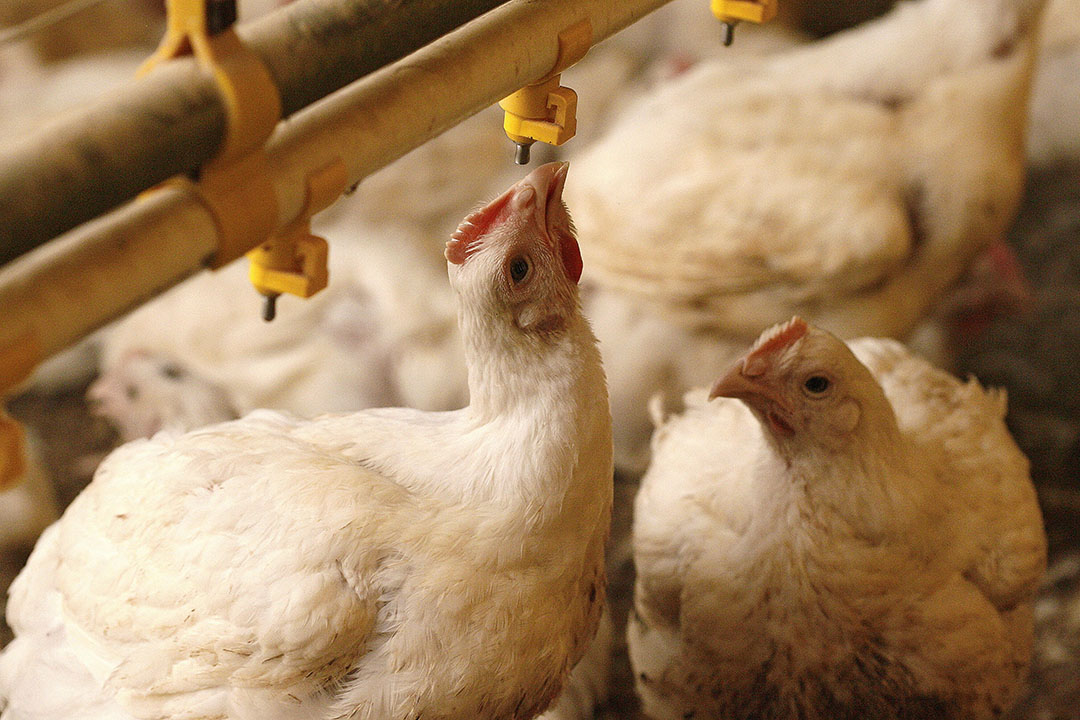An extra pair of eyes in the broiler house

Royal GD is developing the Ethometer, a camera system that alerts broiler growers to behavioural changes in their flocks. Poultry farmers can therefore intervene earlier in the event of disease or welfare issues. The first results of the Ethometer on farm look promising.
The Ethometer takes a snapshot image of a few seconds of individual animals and converts them into GIF files. Vets and experts have identified the activity of chickens from around 40,000 files in total. Based on the literature, they can distinguish between 19 behaviours, including drinking, scratching, pecking the ground, preening, taking a dust bath, sitting quietly and wing flapping.
Such a list of behaviours is called an ‘ethogram’ from which the name Ethometer is derived. The machine learning program was fed with all the labelled images.
“The more examples, the better the algorithm becomes at assessing behaviour,” explains poultry veterinarian and researcher, Willem Dekkers. Poultry welfare and behaviour are part of his remit at Royal GD.
There have been many developments in this field in recent years, including new opportunities for using big data and artificial intelligence. GD also wanted to explore this area. The project started with financial support from the Dutch poultry organisation Avined, with experiments using cameras in GD’s poultry facilities in Deventer. The research was carried out together with students from the Technical University of Eindhoven and Saxion University of Applied Sciences. As a follow-up to that project, a pilot is now being run in 2 houses at a broiler farm and further research will begin this summer at 5 other poultry farms.
The Ethometer is not intended to replace inspection rounds by broiler farmers with their specific expertise. “You should see the Ethometer as an extra pair of eyes in the broiler house that provide objective and rapid additional insights into the behaviour of the birds. Early detection allows you to tackle problems at an early stage and that translates into better technical results.”

Animal welfare
Animal welfare often refers back to the ‘5 freedoms’ formulated by the British Brambell Commission in 1965, including freedom from hunger and thirst, freedom from physical discomfort, freedom from pain, injury and disease, and freedom from fear and stress.
“These freedoms can still be found in the basic principles of concepts such as the Better Life scheme: sufficient space, distraction material and daylight provision,” said Dekkers, adding that it has not been considered whether these measures have the desired effect. “Daylight can also be too bright for birds. They can get stressed by it and then start pecking, for instance. Do distraction materials, such as straw bales, pecking stones and bags of alfalfa, actually help? We do not know that. Laying hens in operations where grain is added or that are fed alfalfa may eat selectively and that can lead to intestinal problems. You get into discussions because the conditions say nothing about the behaviour of the animals.”
Natural behaviour
The idea that animals in livestock farming should be able to exhibit normal, natural behaviour is not a new principle. It was also one of the freedoms of the Brandell Commission which has gradually acquired more significance. This has become topical again in the Netherlands. After the government’s adoption of the amendment tabled by MP Leonie Vestering of the Party for the Animals (PVDD), Dutch livestock farming systems must be adapted to meet the needs of the animals and that principle will be included in the amended Animals Act that is in the making.
This legislation was not the reason for the development of the Ethometer, Dekkers explains. “But it does come at the same time. With the Ethometer you can demonstrate that the animals’ are exhibiting natural behaviour.”
Broiler farmers who can guarantee this, may also be able to get a premium price for their products, Dekkers suggests. He explains that there was already a method for determining animal welfare: Welfare Quality (WQ). “That is the ‘gold standard’, but it takes half to a whole day to assess a flock. Behavioural observations can be automated more effectively with the aid of artificial intelligence,” he said.
App
The project’s IT partner has developed an app by which the animals’ activities can be monitored live. Changes over time can also be viewed on the dashboard. These can be compared at a later stage with the average of the house, the company and other flocks in the Netherlands.
In the event of major changes, notifications can be sent to the broiler farmer’s telephone. For example, when an unusually large number of animals are sitting still. The poultry farmer can set the percentage deviation at which a warning is given. The intention is to integrate the reports into systems that poultry farmers already work with.
Sample
The camera captures images of the individual chickens but it does not follow them separately. “We take a very large sample,” said Dekkers, who indicated that 1 camera per house is sufficient because then you record thousands of behaviours per hour. Although, he acknowledges that if something is going on in one corner of the house, you could miss it.
Research is currently being conducted into the added value of multiple cameras per flock. The software signals less feather brushing or less movement, but does not indicate what the cause might be. “Are the birds too cold? Are they sick? Is the litter too wet? The Ethometer does not say what is going on. It may be due to disease or reduced well-being, but in terms of behavioural changes these are closely connected,” he explained.
Broiler farmers must then check for themselves what is going on and, if necessary, seek advice from a vet, feed advisor or other farm experts. It is not yet known what the Ethometer will cost to install and run. The idea is that poultry farmers can subscribe to the application. The Ethometer has first been developed for broilers because they are kept in an unobstructed space and are uniform in nature. That said, Dekkers believes that the methodology of the monitoring system could also work for other animal species and housing types.
The Poultry World Newsletter
Sign up for our newsletter and receive all our need-to-know content three times a week.
Join 31,000+ subscribers
Subscribe to our newsletter to stay updated about all the need-to-know content in the poultry sector, three times a week. Beheer
Beheer











 WP Admin
WP Admin  Bewerk bericht
Bewerk bericht